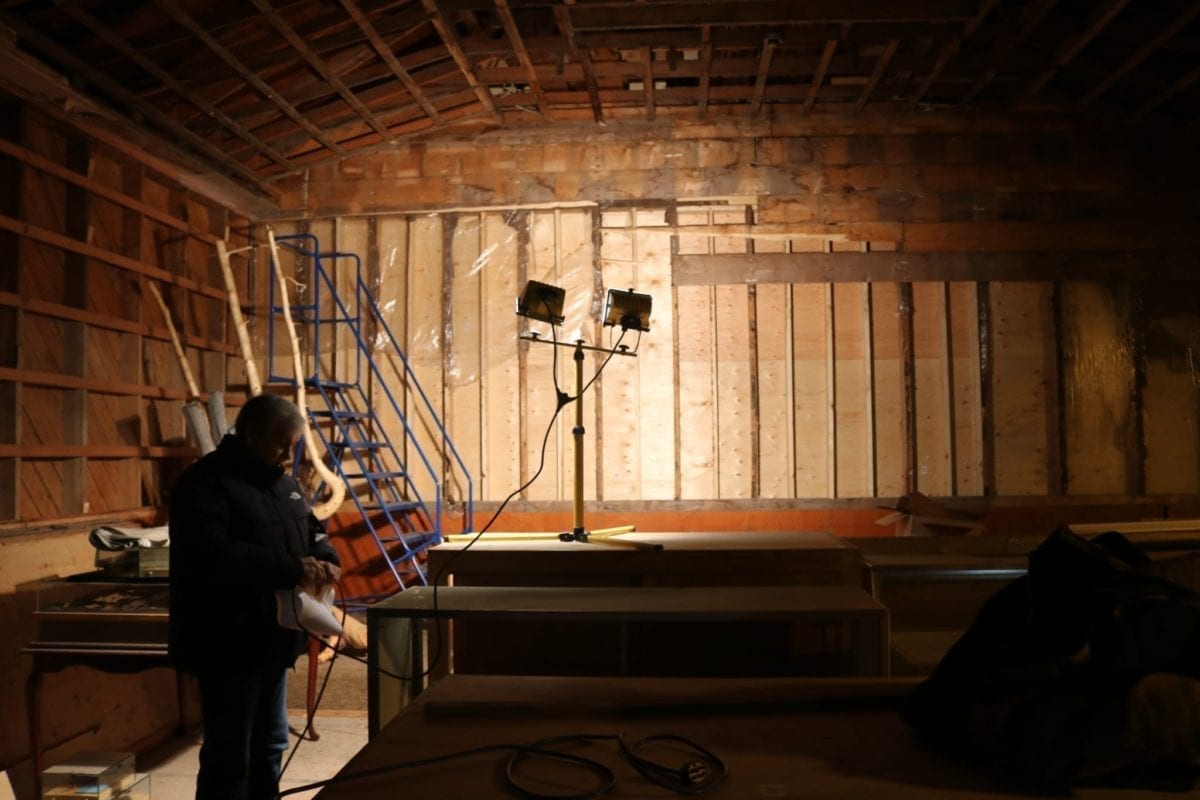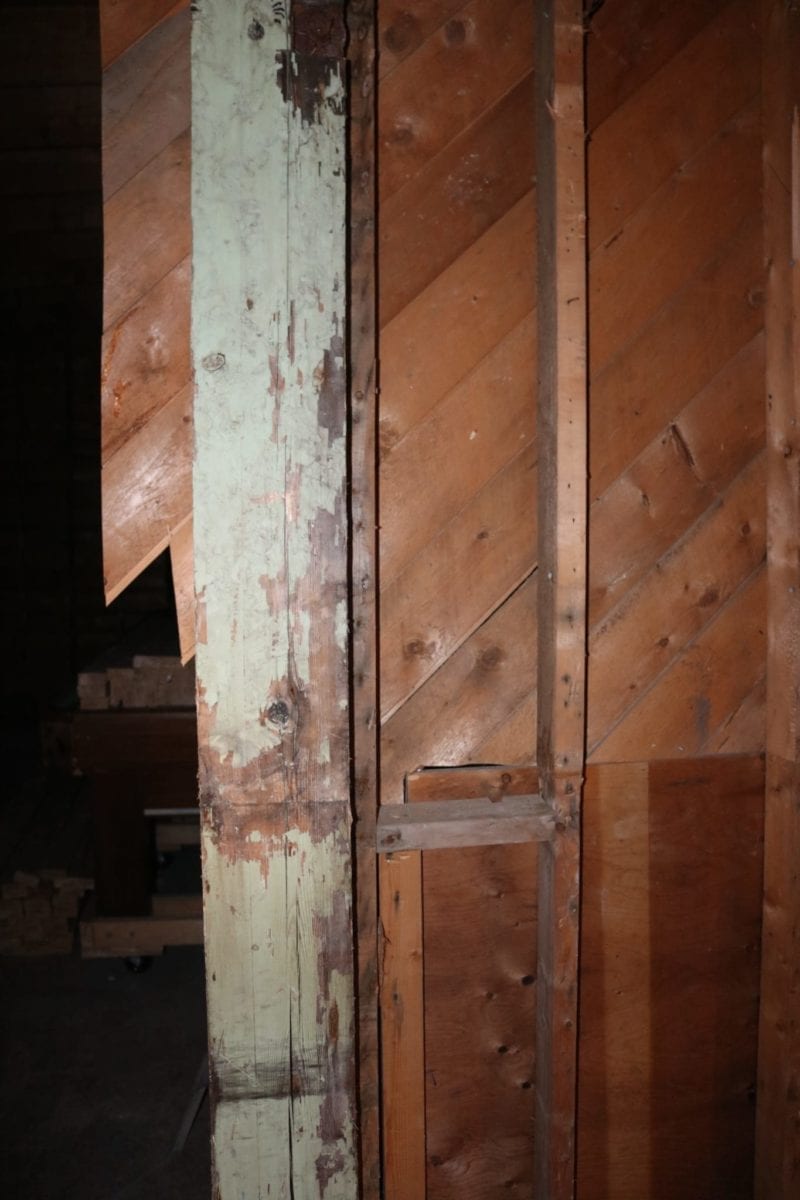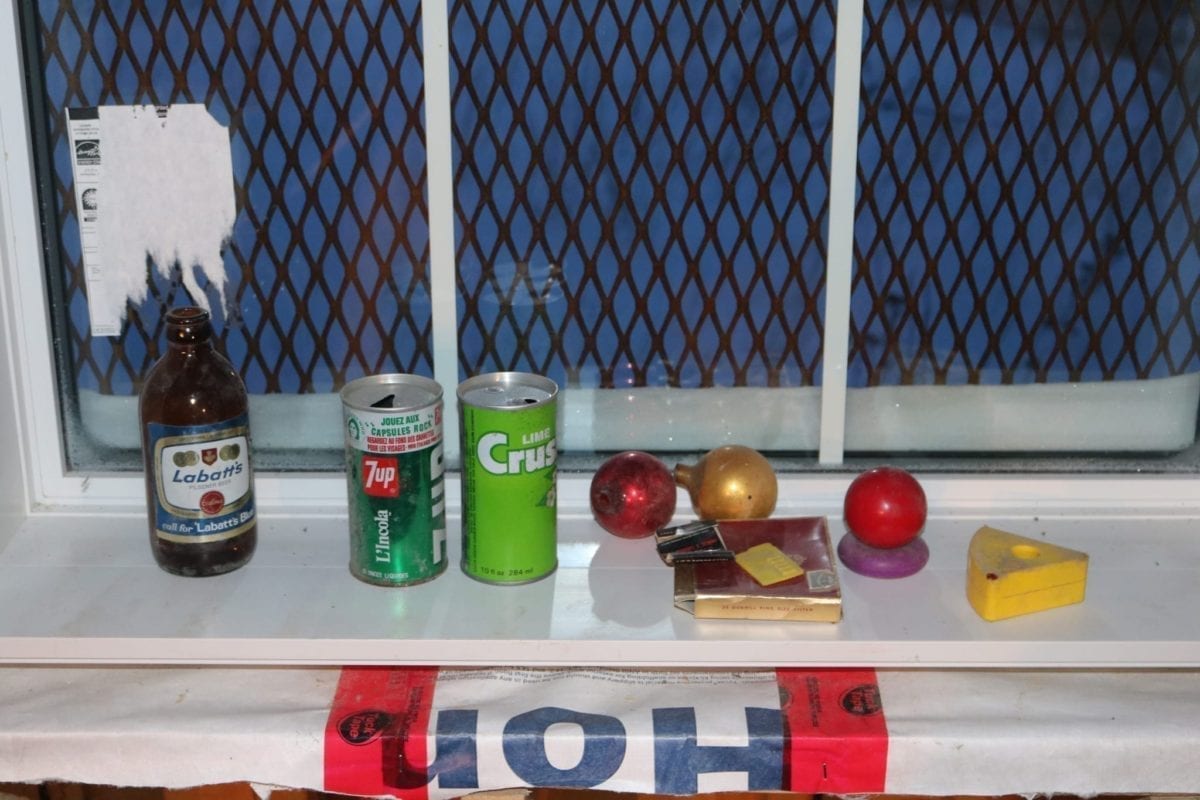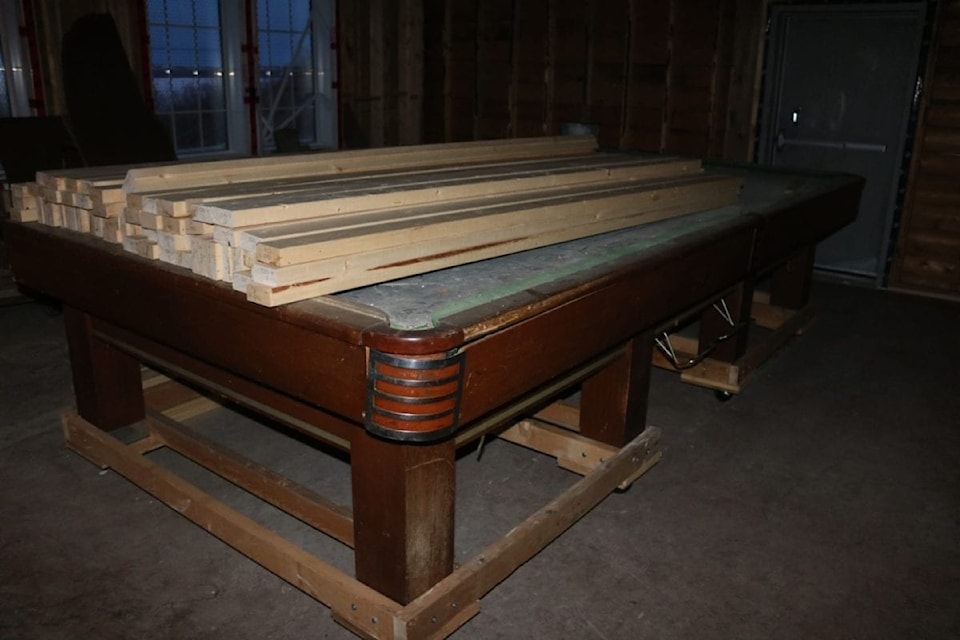A museum celebrating Yellowknife's past, especially its mining history, is believed to be about four years from being established at Giant Mine.
The Yellowknife Historical Society (formerly the NWT Mining Heritage Society) has spent nearly 20 years refurbishing the abandoned mine's former recreation hall which is sub-leased to the city and located on a plot of Commissioner’s Land on Back Bay.
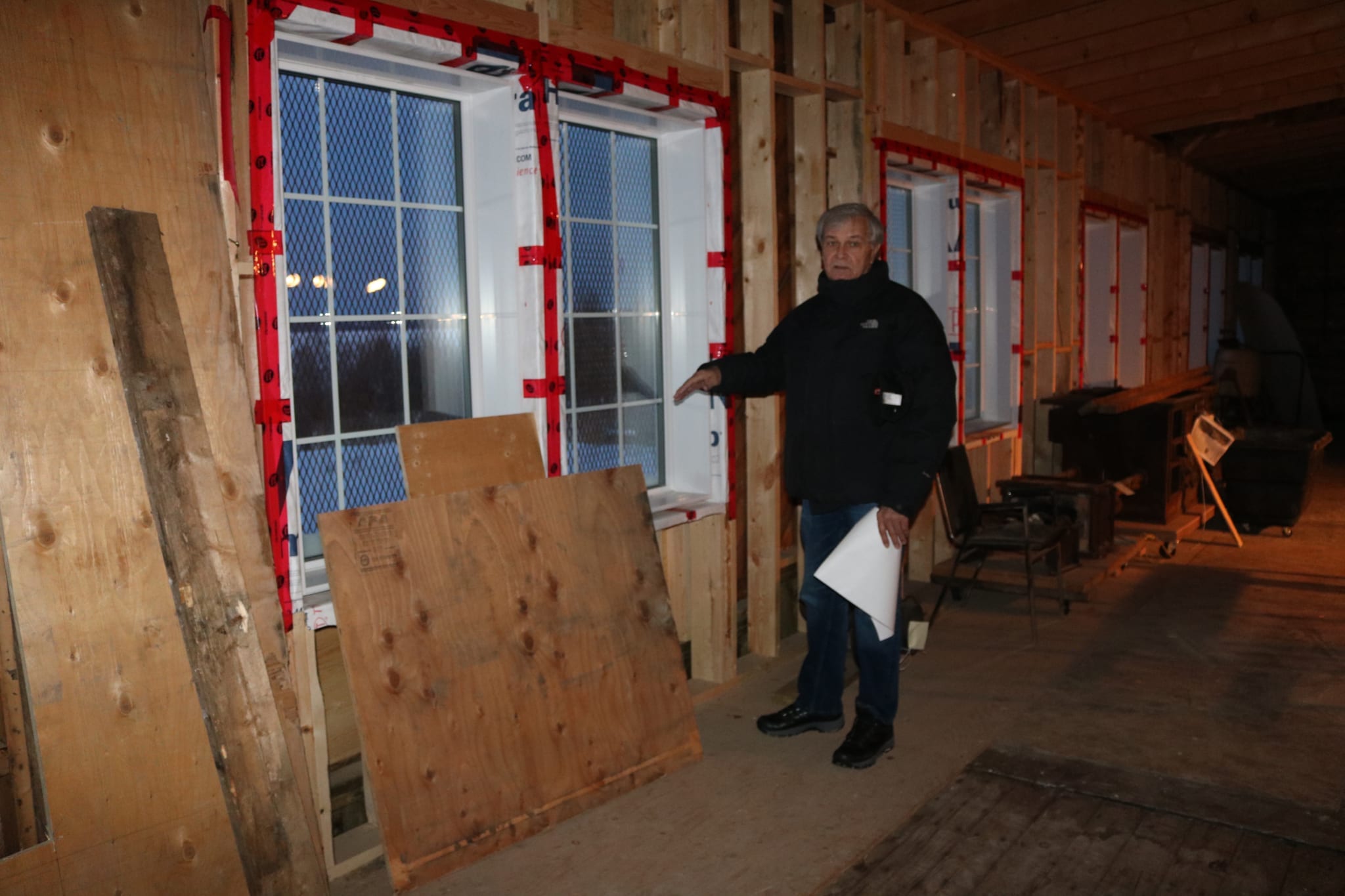
Simon Whitehouse/NNSL photo
The problem is the rec hall is within the Giant Mine site, which will undergo a major cleanup by the federal government's Giant Mine Remediation team over the next decade. The team is waiting for a Type A water licence and land use permit from the Mackenzie Valley Land and Water Board to start remediation in 2021 as per the project team's Closure and Reclamation Plan for the area.
Yellowknifer was recently given a tour of the rec hall by Helmut Epp, president of the Yellowknife Historical Society and Marie Adams, a society board member, to show the progress of the museum, which sits next door to the Great Slave Sailing Club close to the Giant Mine boat launch. The tour complemented the release of a feasibility study commissioned by the historical society last week.
Historical society members say the document gives a clearer picture of its financial situation, what costs remain associated with the project and how the museum can take advantage of an expected surge in arts, heritage and geology tourism over the coming years. It will also contains an independent public survey that shows a nearly 100 per cent approval rate for the project among industry and the public.
The study shows that the historical society's main fundraiser - the annual Beer Barge -has contributed more than $17,000 every year and is part of an overall sound financial management and strong support among members and the community.
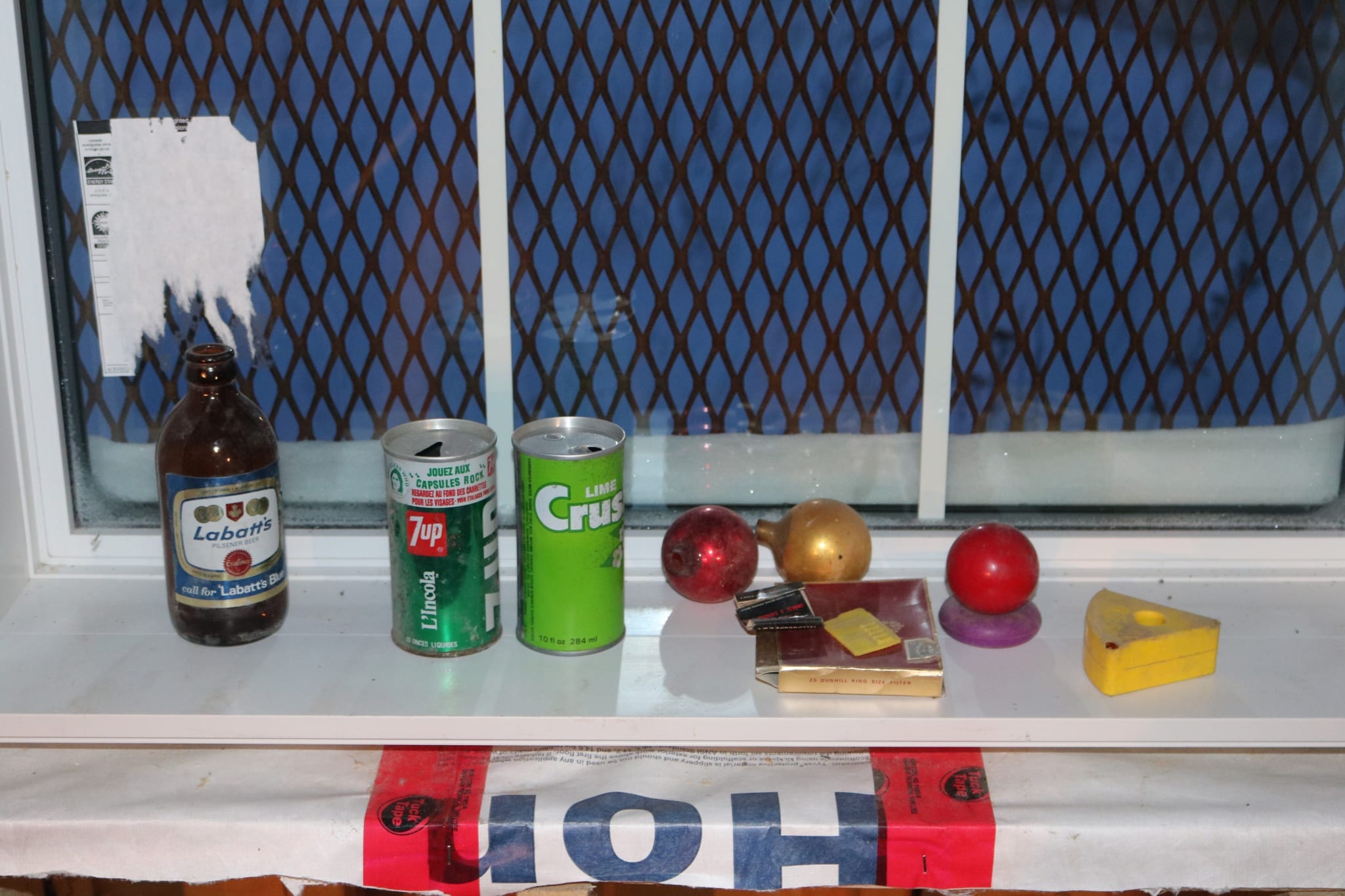
Simon Whitehouse/NNSL photo
"The Society has annual fundraising events that have brought in over $146,600 in the last five years, an average of $29,321 per year," states the report. "Those efforts, including the Beer Barge, a well-known activity around Yellowknife, will continue to bring in revenues for the Society and its Centre yearly."
The recreation hall, built in the early 1950s, is historically significant because it was the site of much of early Yellowknife social life. The building once sported a dance floor, large cinema screen, mail and library book dropoffs, and a pool hall.
Epp estimated that the museum is about 50 percent complete with much internal work yet to be done, however the structure has also seen several significant upgrades since the museum's inception. Roofing was completed in 2007 and foundation repairs were done in 2012. In more recent years, asbestos and hazardous materials have been removed and solar panels feeding into the city's electrical grid have been added. Some carpentry and electrical are to be completed and other items like water and sewer and a wood pellet boiler are yet to be added.
"It is important to note that during the last 11 years, the Society has already spent over $820,937.21 on the Rec Hall Constructions and Site/Outdoor Display Improvements. Various sources of governmental funding covered most of the expenses," states the study.
Epp said determining when opening day takes place comes down to money. If the historical society can find the needed $800,000 in the near term, either through government or private donors, the museum could open in two years.
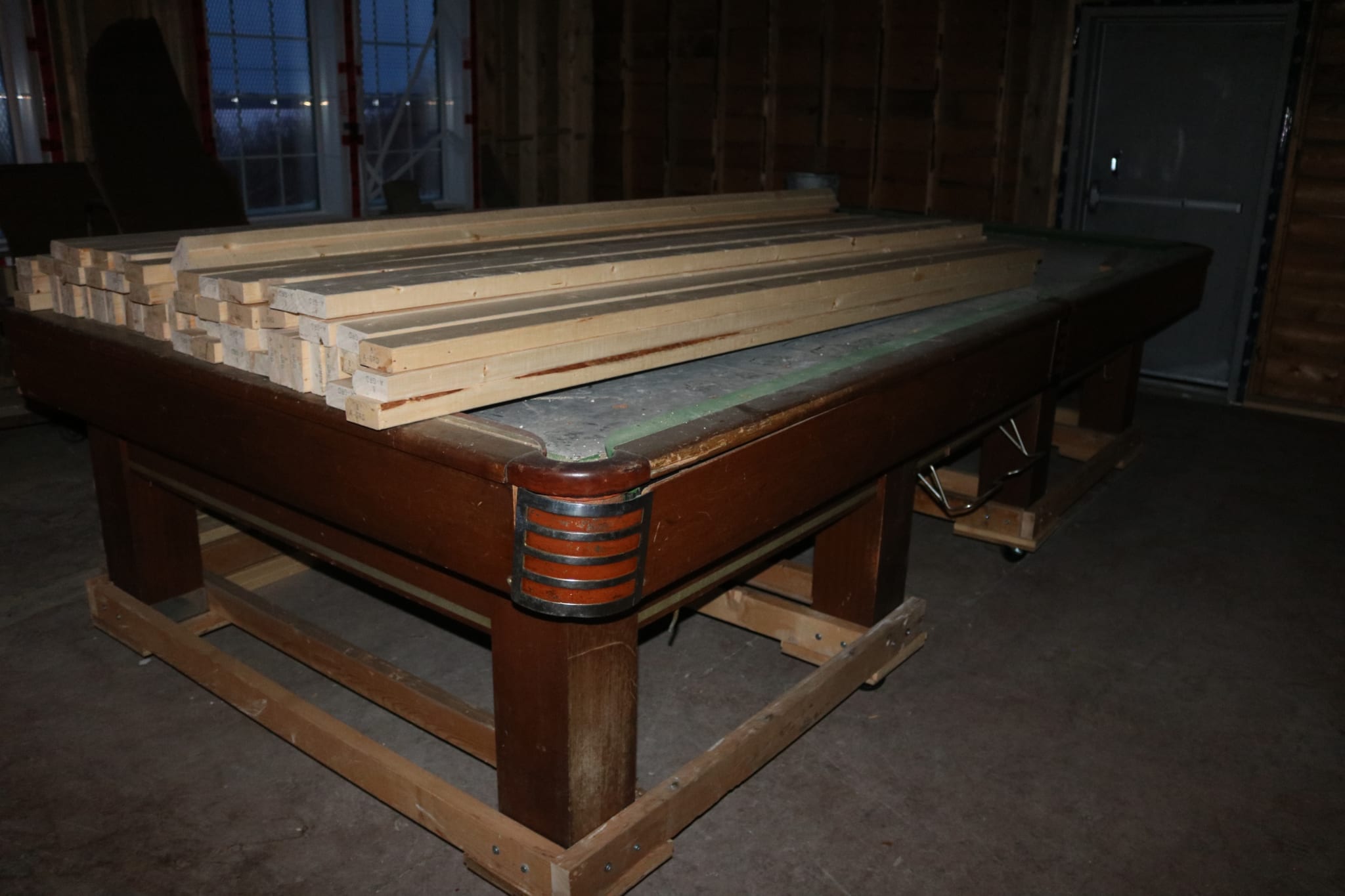
Simon Whitehouse/NNSL photo
"The society has spent close to $1 million in renovations," he said. "I think that sometimes the public might think that not much is happening in there other than the roof that we put on almost 12 years ago.
"What we need is another $800,000. If we get it right away, we could open right away, potentially."
Plans for the museum include a large exhibition space showing Yellowknife's cultural history, a gift shop, a small cafe with a back deck, office and administration space and a renovated loading dock and entrance way.
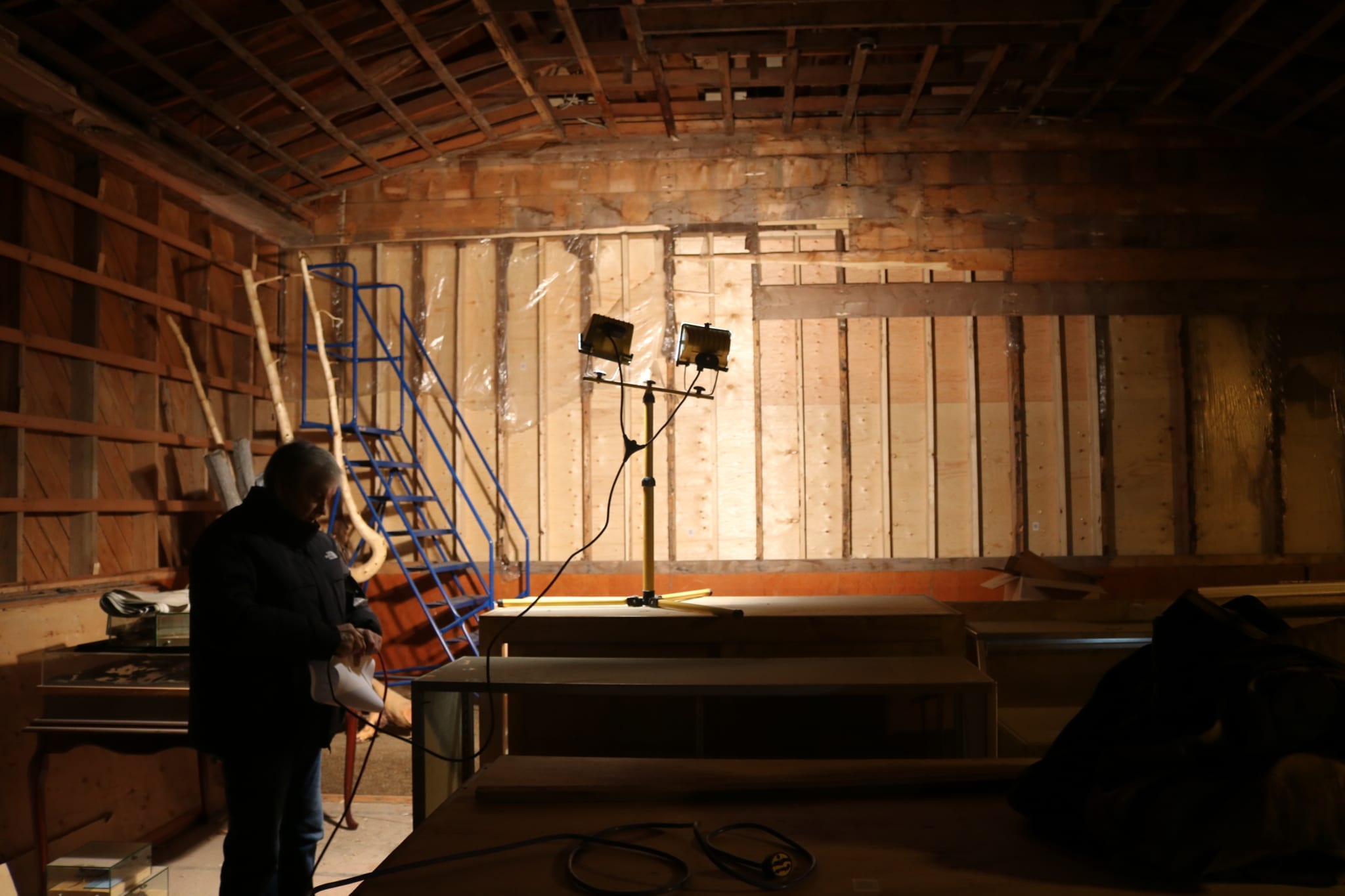
Simon Whitehouse/NNSL photo
Giant Mine Remediation likely to impact museum operations
Epp and Adams say they have been working to maintain a positive relationship with the Giant Mine Remediation Team.
Earlier in the year, the historical society sought a compensation claim for the museum due to the remediation project. In the society's estimation, there would be significant costs in having to move its outdoor equipment for cleanup.
In a Nov. 19 letter to 26 claimants that included the Yellowknife Historical Society the remediation team recommended to the land and water board to dismiss all compensation claims. Still the society is looking to work with the remediation team both in limiting disruption to but also including them as part of the town and mine's story.
"It (would be) showcasing a world class remediation and telling the story of how it happened," Adams explained. "The story of why (reclamation) happened is important as is the fact that it is a world class remediation project. Twenty years ago, people came from all over Europe and the world to advise the Government of Canada on what to do."
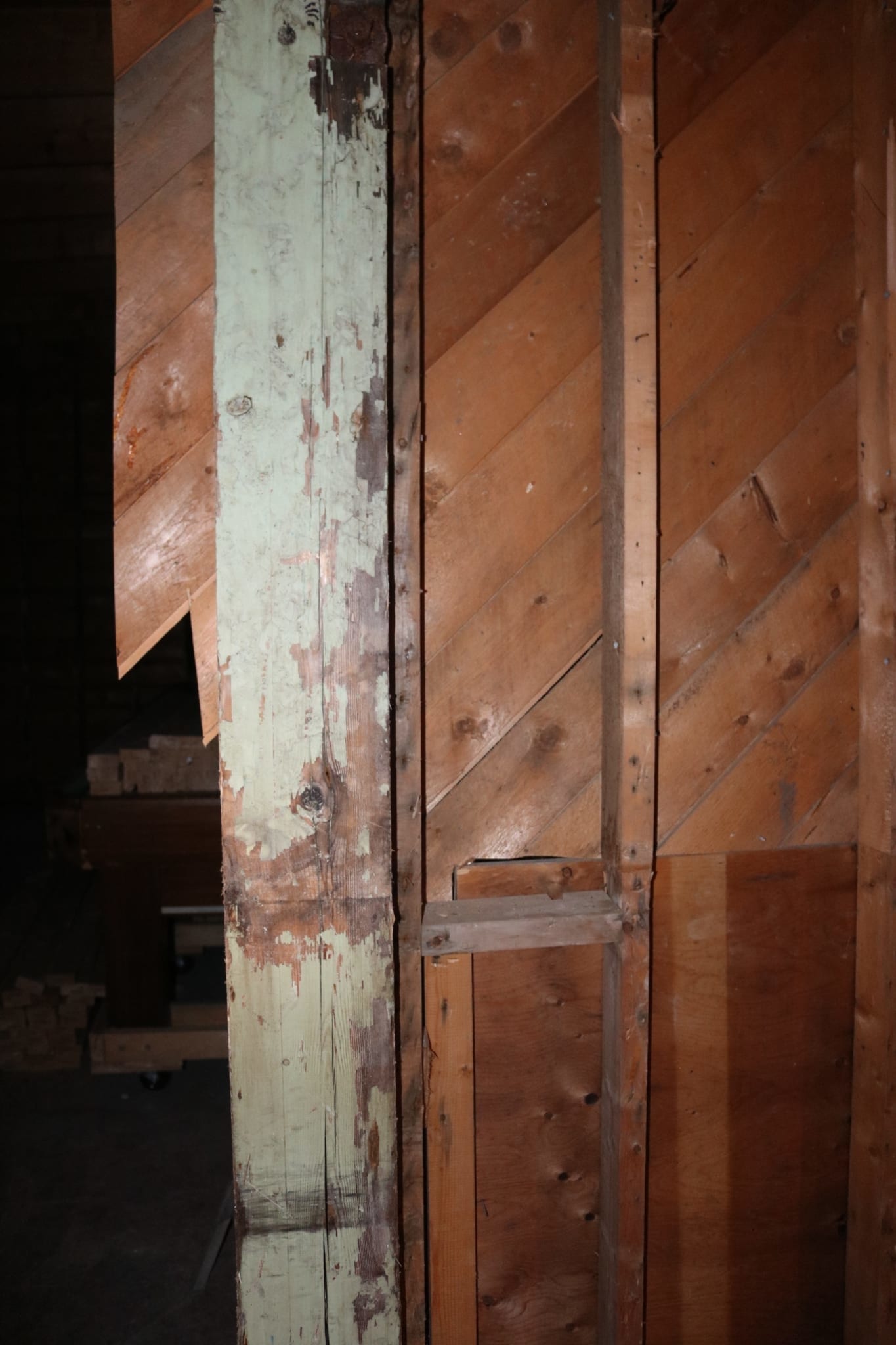
Simon Whitehouse/NNSL photo
The remediation team states in the November letter that the museum will benefit from the cleanup because it will lead to a healthier and safer site for visitors.
“While the GMRP activities will prevent the YKHS from occupying and using portions of the property it currently occupies for the time required to remediate the property, if the YKHS sub-lease is renewed the GMRP is committed to making efforts to plan and conduct the project so as to minimize the time required and the impact on the YKHS and other users to what will be reasonably necessary to carry out the Project,” the letter states.
Epp said it is his understanding that the museum will retain access to the museum during remediation over the next decade.
"We will have access during the duration of the remediation to the museum site," he said.
"We have an official letter from the remediation team saying that we will not be restricted access to our site."
